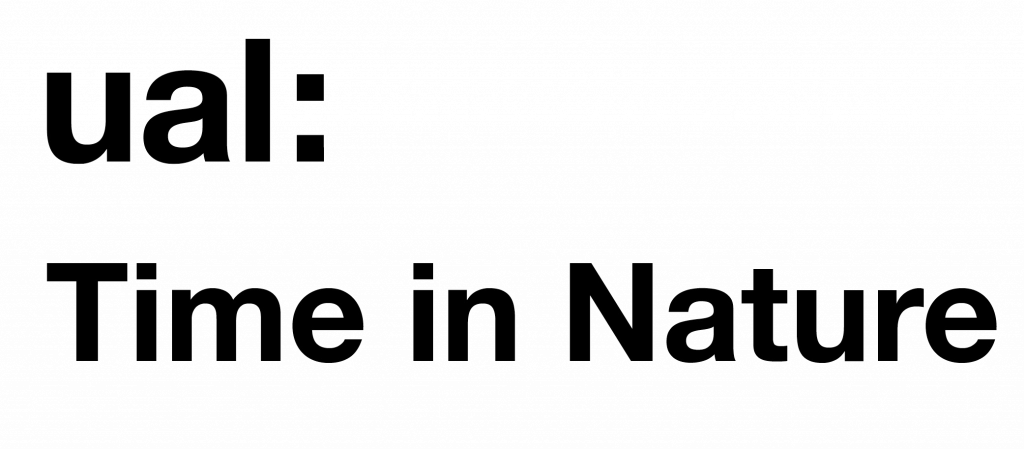
Time in Nature
Time in Nature is a resource created by and for UAL staff that explores nature as pedagogic practice, to support the teaching and learning of art and design as climate, social and racial justice. Developed by the Academic Discourse & Action Learning Committee (working to UAL’s Climate Action Plan), the aim is to encourage nature-based learning across UAL disciplines. It shares case studies, maps green spaces and compiles key resources, building a resource of information, ideas and possibilities that can be adopted and adapted by UAL staff across colleges and disciplines, applied to different contexts, intentions and outcomes, as well as adjusting to seasonal change.
What do we mean by nature?
Nature is not only rural idylls and unspoilt open landscapes, but any environment where life is finding niches and habitats. We define ‘nature’ as anywhere with abundant ecosystems, from ancient woodlands to urban canals, from open meadows to carefully managed public parks, and from patches of wasteland to cracks in the pavement. Around all our colleges and buildings there are plentiful spaces where we can learn from and with nature, and even enable us to think about how our creative practices can be designed for nature.
What is nature as pedagogic practice?
We are increasingly recognising the benefits that spending time in natural environments can have on our health and wellbeing. Taking teaching outdoors and embracing the elements can create learning experiences which are active, situated and deeply immersed, connecting with a multitude of species and interconnected ecosystems. Time in Nature is not only about enhancing the benefits of being in nature but also thinking about nature itself as a learning resource: exploring how we learn in nature (as inspiration), but also how we can learn with nature (as co-creator) and for nature (shifting our thinking towards the needs of the environment, our interconnections, and positioning ourselves as part of nature).

… in Nature
Nature as a multisensory learning environment

… with Nature
Nature as a teacher and co-creator

… for Nature
Nature as a client
How we learn and engage in that learning can be shaped by the characteristics of different learning environments. Nature offers us a space for learning, for observing and connecting. When we are in nature all our senses are activated in response to our immediate surroundings. We can attune, take time, and be present.
Observing the rich complexity of living systems and processes can provide inspiration for art, design and architectural practices through bio-inspiration, biomimicry and biophilia. Nature offers us exemplar strategies for strength, resilience, and adaptability. Learning with nature also invites us to think about how we relate to other living systems and how we can work with natures resources more sustainably, avoiding practices of extraction or exploitation. We can observe, understand and connect.
Teaching for nature asks how our creative practices can contribute towards a healthy planet, shifting perspectives away from human-centric priorities to start thinking about how our ideas and actions can benefit nature. Rather than taking from nature, what can we give back through creative and critical practices? We can support, restore and regenerate.
The Time in Nature body of work has been developed through a series of collaborative and experiential workshops convened by Dr Heather Barnett, Pathway Leader, MA Art and Science, CSM.
Key contributors to the project include:
· Nina Stevenson, Head of Education, Centre for Sustainable Fashion ·
· Ilan Valdes and Wing Hei Calesta Ng, Climate Advocates, CCW ·
· Alejandro Martínez, Curriculum Developer – Climate Justice, LCC ·
· Megan St Clair Morgan – copywriter/editor ·
